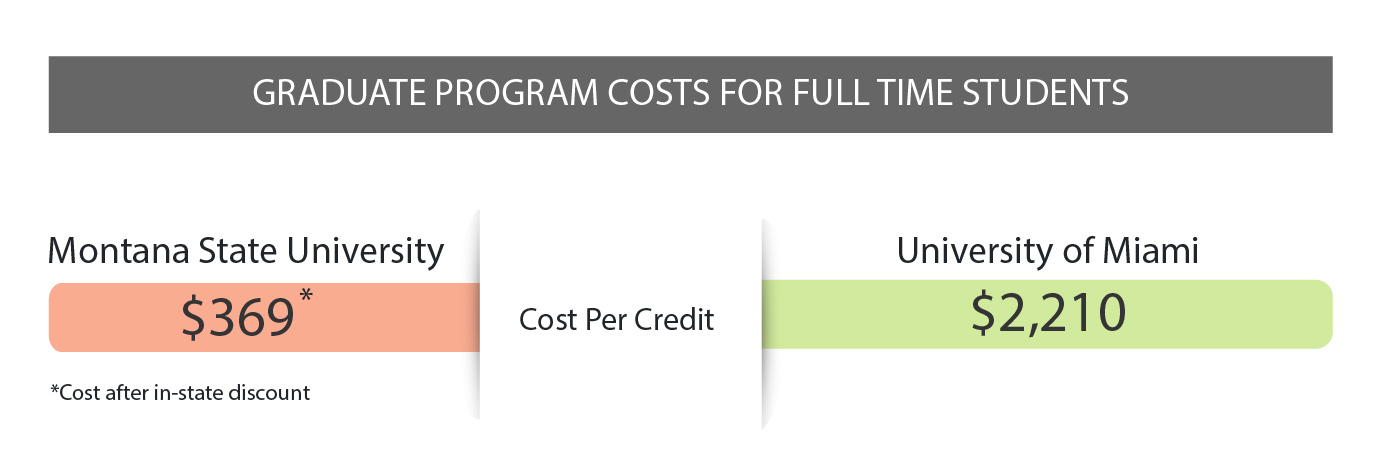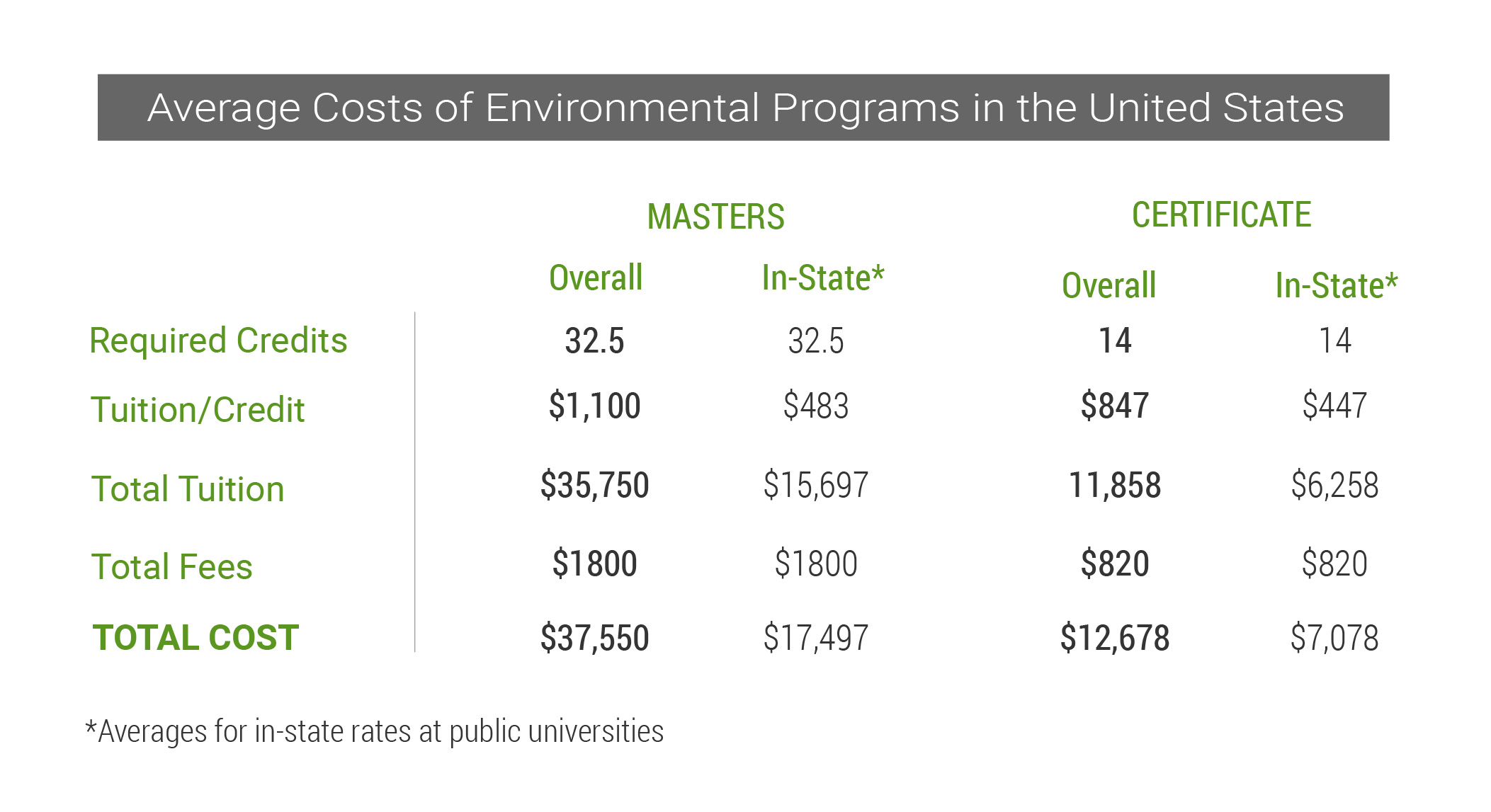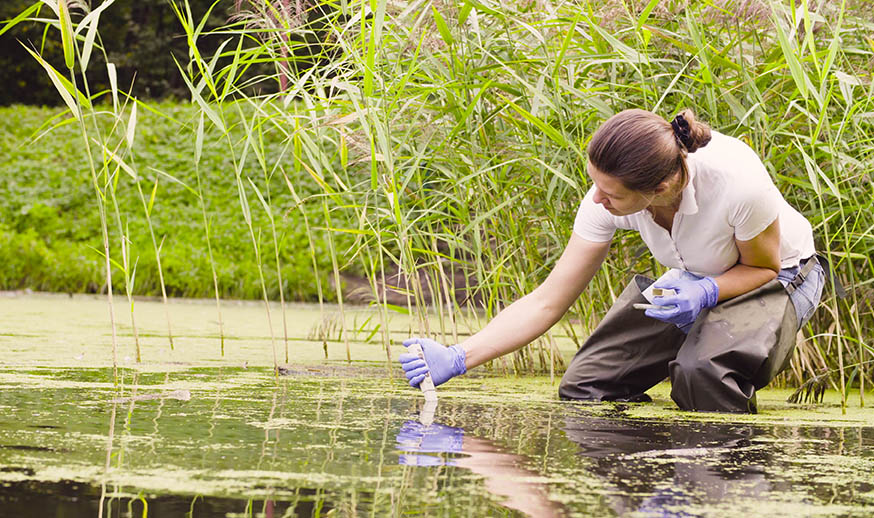Below find the latest graduate assistantships and other funding opportunities posted across the web in the last week in ecology, conservation and related environmental fields.
[cjbn_cta]
Master’s Opportunities
MSc Graduate Research Assistantship: AU Shellfish Lab
Auburn University | Auburn, AL
Program: Fisheries – MS
Conduct research on improving Eastern oyster (Crassostrea virginica) crop inventory and farm management through the practical integration of RFID technology in shellfish aquaculture.
Graduate Research Assistants (2): Alabama Cooperative Fish and Wildlife Research Unit
Auburn University | Auburn, AL
Program: Fisheries – MS
Develop a thesis that provides extensive information on the distribution, habitat use, and demographics of invasive carp and native fishes of the lower Mississippi River
MSc Assistantship: Mesocarnivore Movement – Cal Poly, SLO
California Polytechnic State University | San Luis Obispo, CA
Program: Biological Sciences – MS
Work on a mesocarnivore movement study involving coyote-sheep interactions in and around San Luis Obispo, CA in fall, 2021.
MS Assistantships (3): Fisheries Conservation Genetics
Humboldt State University | Arcata, CA
Program: Natural Resources – MS
Apply genetic approaches to fish conservation and management, including:
1. quantification of the variability of Ceratonova shasta DNA concentrations in Klamath River water samples.
2. monitoring coho salmon at local-scales in northern California streams using environmental DNA.
3. using genomics to elucidate local adaptation among isolated populations of the endangered tidewater goby.
MS Assistantships (3): Ecology and Evolution of Fall Webworm
University of Denver | Denver, CO
Georgetown University | Washington, DC
University of Massachusetts | Amherst, MA
Program: Biological Sciences – MS, PhD
Study ecology and evolution of diet breadth of a generalist caterpillar, fall webworm. Examine how bottom-up and top-down selective pressures affect the diet breadth of a generalist insect; the research will involve both field and lab work.
MS Graduate Opportunity: Microbial Ecology of Terrestrial-Aquatic Linkages
University of Georgia | Athens, GA
Program: Ecology – MS
Work on the microbial ecology of terrestrial-aquatic linkages at University of Georgia’s Savannah River Ecology Laboratory in Aiken, SC.
MS Position: Aquatic Biogeochemistry
Louisiana State University | Baton Rouge, LA
Program: Environmental Sciences – MS
Work on carbon transport and transformation in aquatic systems. The research involves field sampling of the Mississippi River and an urban lake with a research focus on biogeochemical cycling of carbon, especially CO2 outgassing.
Graduate Assistant: USM Gulf Coast Research Labratory
The University of Southern Mississippi | Hattiesburg, MS
Program: Marine Science – MS
Study the recruitment, growth, and health of oysters in Mississippi Sound as part of a large restoration program following the 2019 mass mortality due to the opening of the Bonnet Carré spillway.
Research Technician: MO Cooperative F & W Research Unit
University of Missouri | Columbia, MO
Program: Natural Resources – MS
Assist with the collection of telemetry and other data for Striped Bass and other fish species in Bull Shoals Lake.
MS Position: Social Network Analysis and Ecology of Bats
New Mexico State University | Las Cruces, NM
Program: Fish, Wildlife & Conservation Ecology – MS
investigating the effects of animal movement and social behavior on disease dynamics, with a focus on bats and SARS-CoV-2, the virus that causes COVID-19.
MS Positions: Environmental Science
University of Tennessee at Chattanooga | Chattanooga, TN
Program: Environmental Science – MS
For students wanting to gain experience in the fields of environmental science, biology, geoscience, and natural resources. The non-thesis is designed for students who wish to enhance their professional degree skills.
MS Assistantship: Artificial Reef Research
University of Texas Rio Grande Valley | Edinburg, TX
Program: Ocean, Coastal, and Earth Science – MS
Investigate juvenile fish use of artificial reefs via ROV surveys and visual observations on SCUBA.
MS position in Thornforest Restoration & Seedling Ecophysiology
University of Texas Rio Grande Valley | Edinburg, TX
Program: Biology – MS
Evaluate conditioning pretreatments to minimize the transplant shock and improve initial field performance of thornforest seedlings.
MS Position: Genomics and Evolutionary Biology
Texas Christian University | Fort Worth, TX
Program:Biology – MS
monitoring the effects of hatchery rearing on genome-wide variation in Chinook Salmon, with a particular focus on the effects of domestication selection.
MSc Position: Human Dimensions of Wildlife
University of Texas at San Antonio | San Antonio, TX
Program: Environmental Science – MS
Assess the effects of Bird City Texas, a community-focused certification program created to help people protect birds and their habitats on
1. attitudes towards birds and bird conservation
2. engagement in nature-based recreation and bird conservation efforts
3. nature-based knowledge.
Graduate Assistantship: Ravens and Grouse
Utah State University | Logan, UT
Program: Wildlife Biology – MS
Investigate raven movements inside known Greater sage-grouse habitats.
MS Opportunities: Behavioral Ecology and Conservation
William & Mary | Williamsburg, VA
Program: Biology – MS
Recruiting new research Masters students in areas of behavioral ecology and applied conservation science, to start in Fall 2021.
Masters & Doctorate
Graduate Research Assistant (MS or PhD) in Aquatic Macroecology / Data Science
Louisiana State University | Baton Rouge, LA
Program: Oceanography & Coastal Sciences – MS
Work on building a database of CO2 in flowing waters (streams) across the US and use statistical modeling to detect spatial and temporal trends.
Phd or MS Position: Predation Risk, Maternal Stress Effects, and Transgenerational Plasticity
University of Massachusetts Dartmouth | Dartmouth, MA
Program: Biology – MS
Projects in our research group are centered on two major themes:
1. Some aspect of how ecological stressors drive changes in free-living animals physiology and behavior, how this impacts reproduction and survival, how this drives changes in population dynamics and ultimately community structure.
2. Some aspect of how maternal stress may impact offspring physiology, behavior and fitness.
MS or PhD Assistantship: Migration Ecology
New Mexico State University | Las Cruces, NM
Program: Fish, Wildlife & Conservation Ecology – MS
Examine migration ecology in the southwest and, particularly, the effects of light pollution on migrating birds.
MS or PhD Assistantship: Restoration Ecology
Utah State University | Logan, UT
Program: Wildlife Biology – MS
MS – plasticity of Bluebunch wheatgrass for restoration
PhD – Criollo cattle in the Canyonlands area
PhD – sagebrush die-off science & restoration in southern UT
[background_block]
To post a graduate opportunity to our next Funding Update, please email us:
[email protected]
[/background_block]
Doctorate Opportunities
PhD Assistantship: Wildlife Survey Design
Auburn University | Auburn, AL
Program: Wildlife Sciences – PhD
Evaluate current and potential alternative survey designs for assessing abundance of wintering waterfowl in Alabama’s Tennessee River Valley.
PhD Research Assistantships (3): Stream Ecology
University of Arkansas | Fayetteville, AR
Program: Biological Sciences – PhD
Focus on factors affecting population and community dynamics of freshwater fish and invertebrates, especially the role of disturbance in community dynamics, impacts of introduced species in aquatic ecosystems, and conservation of aquatic ecosystems.
PhD Position: Sustainable Oceans
University of California, Davis | Davis, CA
Program: Ecology – PhD
Research Traineeship (NRT) program “Sustainable Oceans: From Policy to Science to Decisions”
Focusses on the front-end of the research and training enterprise as a means of building more effective links between the science and decisions on sustainable use of living marine resources.
PhD in Ecology and Evolutionary Biology
University of Connecticut | Mansfield, CT
Program: Ecology and Evolutionary Biology – PhD
Study the interface of ecology and evolution with a focus on understanding the creation and maintenance of biodiversity and resilience of natural systems to disturbances such as climate change.
PhD Student: Forest Ecosystem Dynamics
University of Florida | Gainesville, FL
Program: Forest Resources and Conservation – PhD
Study forest dynamics across spatial scales exploring topics of forest health and tree regeneration.
PhD Position: Remote Sensing & Forestry
University of Georgia | Athens, GA
Program: Forest Resources – PhD
Work on research related to the assessment of understory vegetation in the coastal plain region of the Southern US.
PhD Student: Idaho Cooperative Fish and Wildlife Research Unit
University of Idaho | Moscow, ID
Program: Natural Resources – PhD
Evaluate factors associated with the distribution, occurrence, and population dynamics of Bull Trout in Idaho.
[newsletter-signup]
PhD Research Assistantship: Soil Chemistry
University of Kentucky | Lexington, KT
Program: Integrated Plant and Soil Sciences – PhD
Study the biological and abiotic transformations of ammonium in soils using a combination of wet chemical and imaging/spectroscopic techniques to contribute novel information to our understanding of the nitrogen cycle.
PhD Position: Plant Evolutionary Ecology
Michigan Technological University | Houghton, MI
Program: Biological Sciences – PhD
Understand the origin, maintenance, and changes of genetic, phenotypic and species diversity patterns. Current projects are related to plant genome size evolution and ecology, species interactions (plant-herbivore-pathogen-pollinator-plant interactions), and invasive species biology.
PhD Position: Forest Restoration, Soil Health, & Water Quality
Mississippi State University | Starkville, MS
Program: Forest Resources – PhD
Assess changes in ecosystem services like water quality and soil health during forest restoration activities.
PhD Research Assistantship: Soil Health Monitoring
University of North Dakota | Grand Forks, ND
Program: Biological Sciences – PhD
Develop process-level understanding in support of management that improves soil health, biodiversity, and productivity of irrigated meadows.
PhD Assistantship: Black Bears
Oklahoma State University | Stillwater, OK
Program: Natural Resource Ecology & Management – PhD
Address factors affecting fine-scale movements of dispersing male and female black bears and the implications for bear-human conflict and establishment of a self-sustaining black bear population in east-central Oklahoma.
PhD Assistantship: Landscape Ecology and Fire
Texas Tech University | Lubbock, TX
Program: Wildlife, Aquatic, and Wildlands Science and Management – PhD
Help mentor undergraduate cohorts through The Bridge Adventure Program, a program that aims to foster diversity and inclusion through field-based experiential learning opportunities, including regular excursions for mentored research, service learning, and community-building adventure.
PhD Position: Stream Ecology
University of Texas at Arlington | Arlington, TX
Program: Quantitative Biology – PhD
Determine how biodiversity and species co-occurrence networks in streams—one of the most threatened ecosystems on Earth—would respond to climate change under mitigated, stabilizing, and increasing greenhouse gas emissions.
PhD Positions (2): Microbiome Ecology
University of Texas | Arlington, TX
Program:Quantitative Biology – PhD
Project 1. Seeks to quantify the role of gut microbiota in the plant-insect chemical arms race.
Project 2. Examines the relationship between stinkbugs and the bacterial genus Burkholderia, an emerging model system in symbiosis research, to understand when and how animals benefit from environmentally-acquired microbes.
PhD Assistantship: Rangeland Ecology
Utah State University | Logan, UT
Program: Wildlife Biology
Assess movements of an experimental herd of GPS-collared Criollo and evaluates their impacts on ecosystem services, as well as analyzes efficiency of beef production.
PhD Assistantship: Environmental Data Science and Forecasting
Virginia Tech | Blacksburg, VA
Program: Fisheries and Wildlife Sciences – PhD
apply innovative new techniques to combine lake ecosystem modeling with sensor data analyses to forecast future water quality in drinking water reservoirs







